Site Report
Introduction to major environmental and safety activities at each Kyowa Kirin worksite, as well as a brief worksite history.
Tokyo Research Park
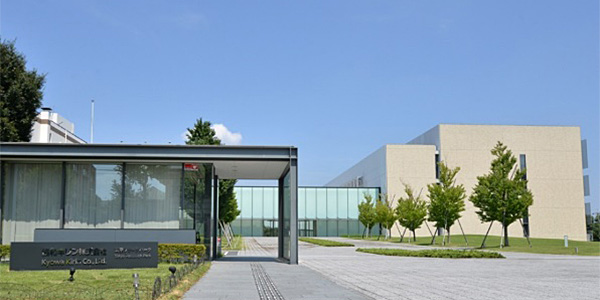
3-6-6 Asahi-machi, Machida-shi, Tokyo 194-8533
Tel: +81-42-725-2555
History
Established as the Kyowa Hakko Kogyo Co., Ltd., Tokyo Research Laboratory in Higashi-Kitazawa, Setagaya-ku, Tokyo, in 1952. Relocated to Machida City in 1960, where it continues to operate today.
In 1956, the Company established a revolutionary production technology for glutamic acid using a fermentation process for the first time in the world. Later, the laboratory conducted wide-ranging research encompassing such areas as nucleic acids, enzymes, antibiotics, and foods, producing countless world-leading results.
More recently, we have focused on research and development into next-generation antibodies and nucleic acid medicines, using, for example, the latest biotechnologies.
Along with the establishment of Kyowa Hakko Kirin Co., Ltd., on October 1, 2008, the laboratory became the Tokyo Research Park. Later on, it became Kyowa Kirin Co., Ltd. Tokyo Research Park following a change in the company’s name on July 1, 2019.
- *Please see the following for information on research and development.
Environmental and Safety Activities
1. Major Environmental Activities
Initiatives to Address Climate Change (Prevent Global Warming)
- Since April 2013, Tokyo Research Park has continuously investigated various energy conservation measures as a Designated Global Warming Measure Site under the Tokyo Metropolitan Environmental Security Ordinance, and has implemented global warming measures in a way that connects to real-world implementation. These efforts resulted in a significant decline in CO2 emissions that exceeded the mandatory reductions stipulated for a Designated Global Warming Measure Site, and in 2022, we were removed as a Designated Global Warming Measure Site. As part of these activities, Tokyo Research Park offered the emissions reduced during the first and second planning periods as credits for the Carbon Offset Program for the Tokyo 2020 Games in August 2020, and cooperated in realizing Tokyo Zero Carbon 4 Days in 2020.
- As a worksite, we regularly hold Energy Conservation Measure Meeting to confirm energy monitoring and energy conservation measure results, as well as to review new measures. More recently, the Committee optimized the operational conditions and controls for air conditioner cooling and heat-source equipment, revised the conditions for laboratory air conditioners, and reviewed the use of lighting. Including efforts to address average monthly temperature fluctuations, this initiative also finely tunes the conditions as the situation requires, and produced energy-saving results.
- Tokyo Research Park has acted to introduce high-efficiency equipment with a low environmental impact for newly purchased equipment and research apparatus.
Initiatives to Prevent Air Pollution
- City gas has been used for boiler facilities thereby eliminating the emissions of SOx and dust.
- Odorous exhaust discharged during the experimentation process is cleaned with a scrubber and release into the atmosphere.
Initiatives to Prevent Water Pollution
- Recognizing water pollution prevention as a particularly important initiative, we provide employee education each year.
- With a particular focus on preventing the release of harmful substances, after collecting waste liquids containing harmful substances that exceed legal standard concentrations, we outsource disposal to a specialized waste disposal company.
- We engage in thoroughgoing wastewater treatment management by conducting regular wastewater measurements and facility inspections.
Initiatives to Reduce Waste
- We are working to avoid the use of organochlorine solvents from the research stage.
- We are working to reduce industrial waste by reusing used equipment and other devices used in research activities and diverting them as valuable resources.
- We are promoting the recycling of waste into resources by selecting waste disposal companies that can utilize material recycling and other recycling methods that have a lower environmental impact.
- We have achieved Zero emission* status every year.
- *Zero emission: Kyowa Kirin Group uses the term to mean a reduction in the amount of waste disposed in landfills to no more than 0.1% of generated waste.
Compliance with the PRTR Act
- PRTR substances (including Class I Designated Chemical Substances) are properly managed, and the emissions of PRTR substances in 2022 were at a level that does not require reporting to the government.
Other Initiatives
- In order to strengthen environmental awareness among all employees, we actively provide regular environmental education, request explanations on and support for energy conservation activity results, and conduct visits to environment-related facilities at each worksite.
- We promote green purchasing by pursuing the use of environmentally-friendly products.
- As clean-up activities in the surrounding area, we conduct clean-up efforts at the nearby Machida Chuo Park, and participate in the Sakai River clean-up activity organized by an outside organization. We have also expanded the scope of our efforts to give back to the community by creating flower beds using part of the grounds.
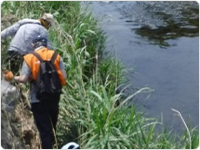
Sakai River Clean-up Activity
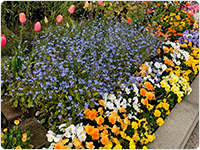
Flower Bedding Activities
- *Please see the following for information on energy intensity, CO2 emissions, waste volumes, and other data.
2. Safety Activities
You can see this table by scrolling horizontally.
| FY2024 | FY2023 | FY2022 | FY2021 | FY2020 | |
|---|---|---|---|---|---|
| Number of accidents that required time off from work | 0 | 0 | 0 | 0 | 0 |
3. Awards (most recent five-year period)
You can see this table by scrolling horizontally.
| March 2025 | Received the Machida 3R Award from Machida City for our proactive efforts to reduce waste and ensure proper waste disposal. |
|---|---|
| November 2021 | Award from the Tokyo Fire Department, Machida Fire Station Chief for diligently observing the law and preventing accidents |
Fuji Site (Fuji Research Park and CMC R&D Center)
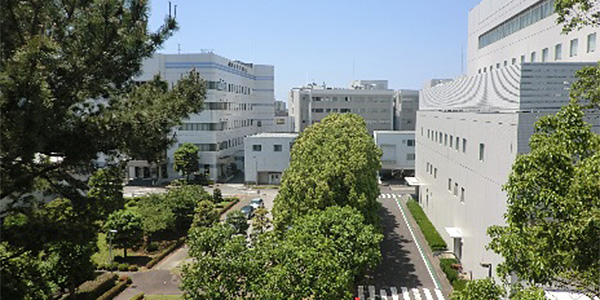
1188 Shimotogari, Nagaizumi-cho, Suntou-gun, Shizuoka 411-8731
Tel: +81-55-989-2004
History
Originally constructed in 1943 as the Kyowa Kagaku Kogyo Co., Ltd., plant, the worksite was later inaugurated as the Fuji Plant at the same time Kyowa Hakko Kogyo Co., Ltd., was established in 1949.
That same year, the worksite installed Streptomycin testing and production equipment as its first step toward manufacturing pharmaceuticals. Since this time, it has developed into the core plant for manufacturing pharmaceuticals through repeated expansion coinciding with growth in the pharmaceuticals business.
Along with the establishment of Kyowa Hakko Kirin Co., Ltd., on October 1, 2008, the worksite became the Kyowa Hakko Kirin Co., Ltd., Fuji Plant and Fuji Research Park.
Following the change in the company’s name on July 1, 2019, the worksite became the Kyowa Kirin Co., Ltd., Fuji Site. Since this time the Fuji Research Park and CMC R&D Center have continued to function as the core of Fuji Site.
In May 2022, as part of an effort to support diversifying lifestyles and work styles, and to support work-life balance among families with small children, the worksite opened the Nagaizumi Kyowa Kirin Nursery School as a Company-led daycare facility on its grounds.
- *Please see the following for information on research and development.
Environmental and Safety Activities
1. Major Environmental Activities
Initiatives to Address Climate Change (Prevent Global Warming)
- We have been purchasing RE100-compliant power since January 1, 2022, and have switched over all electricity used to renewable energy.
- We installed solar power generation facilities, which are used to supply electricity.
- In 2019, Fuji Research Park launched the Energy Management Subcommittee, which has acted to monitor energy use and review new energy conservation measures. It selects more efficient equipment when updating equipment.
- We have produced energy conservation results by optimizing large-scale air conditioning equipment through a review of operating conditions and scheduling, and by switching over lighting to LED fixtures.
Initiatives to Prevent Air Pollution
- We use city gas, which emits no sulfur oxides, as the fuel for small boilers.
- We are working to reduce the amount of city gas used by updating to high-efficiency boilers.
Initiatives to Prevent Water Pollution
- Each year, we hold emergency response training drills in preparation for wastewater incidents, and review emergency response procedures as necessary. In 2020, we began providing employee education regarding wastewater.
- The Energy Management Subcommittee also engages in water resource protection, monitors water intake, and implements water conservation measures.
- To ensure thorough wastewater treatment management, regular wastewater measurements and facility inspections are conducted.
Initiatives to Reduce Waste
- Having positioned waste as an important environmental issue, we have provided waste-related education to employees since 2021.
- We are working to reduce the amount of waste, and we are also promoting recycling through thorough sorting, etc., and have achieved zero emissions*. In addition, we are working to improve the resource recycling rate of waste plastic by thoroughly sorting waste plastic and beginning to transport it to intermediate treatment companies that can process it for material recycling.
- *Zero emission: Kyowa Kirin Group uses the term to mean a reduction in the amount of waste disposed in landfills to no more than 0.1% of generated waste.
Compliance with the PRTR Act
- Along with reducing the use of substances subject to the PRTR Act, we strive to reduce the amount of these substances released to the atmosphere. Until now, we have reduced use of regulated substances by updating solvent recovery equipment and changing experimental systems.
Emissions of PRTR Act-designated Class 1 Chemical Substances in FY2024
You can see this table by scrolling horizontally.
| Substance Name | Atmospheric release (tons) | Water release (tons) | Soil release (tons) |
|---|---|---|---|
| Acetonitrile | 0.0140 | 0.000 | 0.000 |
- Although Fuji Site uses other PRTR Act-designated Class 1 Chemical Substances besides acetonitrile, the amounts fall below those requiring reporting to the government.
Other Initiatives
Global Environment Conservation Initiatives
- While cooperating with local communities through participation in the Ayutsubo Waterfall Vicinity Clean-up Activity, River Friendship Kise River Clean-up Event, and Mt. Fuji Trash Reduction Operation, we have engaged in nearby regional environment conservation.
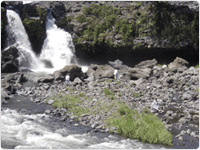
(Izu Peninsula Geopark, certified as a UNESCO Global Geopark in April 2018)
- We regularly conduct environmental patrols within and around the grounds.
- We promote green purchasing by pursuing the use of environmentally-friendly products.
- *Please see the following for information on energy intensity, CO2 emissions, waste volumes, and other data.
2. Safety Activities
You can see this table by scrolling horizontally.
| FY2024 | FY2023 | FY2022 | FY2021 | FY2020 | |
|---|---|---|---|---|---|
| Number of accidents that required time off from work | 0 | 0 | 0 | 0 | 0 |
3. Awards (most recent five-year period)
- Not applicable
Takasaki Plant (including Bio Process Research and Development Laboratories)
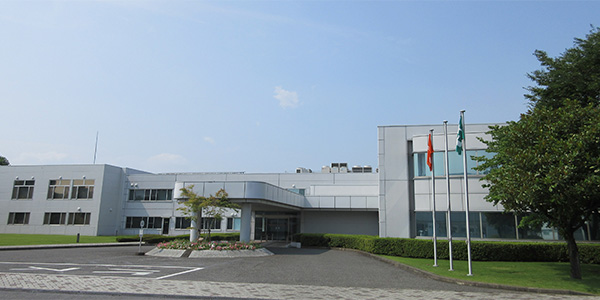
100-1 Hagiwara-machi, Takasaki-shi, Gunma 370-0013
Tel: +81-27-353-2011
History
The Takasaki Plant began operations in 1990 as the manufacturing and logistics site for the Kirin Brewery Company, Limited, pharmaceutical business.
The Takasaki Plant manufactures pharmaceuticals using biotechnology based on uncompromising quality management and manufacturing control that complies with GMP (Good Manufacturing Practice) global standards.
Along with the establishment of Kyowa Hakko Kirin Co., Ltd., on October 1, 2008, the worksite became the Kyowa Hakko Kirin Co., Ltd., Takasaki Plant. Later on, it became the Kyowa Kirin Co., Ltd., Takasaki Plant following the change in the company’s name on July 1, 2019.
In April 2023, we held a completion ceremony for Q-TOWER, a new quality assurance-related complex facility*1. Q-TOWER is a facility that complies with the trilateral GMP*2 of Japan, the U.S., and Europe, and performs operations related to quality control and quality assurance, including quality analysis of biopharmaceutical products and raw materials.
In February 2024, we held a ceremony to mark the completion of our new manufacturing building, HB7. The HB7 building is equipped with both GMP manufacturing facilities for early development and investigational drug substances, as well as pilot facilities for the production of active pharmaceutical ingredients for biopharmaceuticals utilizing our proprietary antibody technology and protein engineering. In addition, the building is equipped with training facilities that enable on-site training on the equipment used in GMP manufacturing.
- *1:
- *2:GMP : Good Manufacturing Practice : A summary of the requirements for meeting established quality standards in the manufacture of pharmaceutical products and for proper control of the manufacturing process of such products.
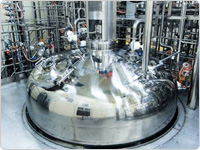
Cell Culture Tank
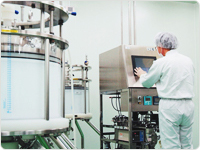
Active Pharmaceutical Ingredient Refining Process
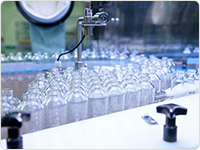
Formulation and Filling Process
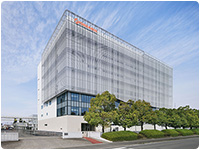
Q-TOWER
- *Please see the following for information on research and development.
Environmental and Safety Activities
1. Major Environmental Activities
Initiatives to Address Climate Change (Prevent Global Warming)
- Under the leadership of the Energy Conservation Liaison Meeting, Takasaki Plant has updated equipment and reviewed equipment use and management in an effort to reduce energy usage.
- We installed solar power generation facilities on the premises, which are used to supply electricity.
- We have undertaken activities to improve awareness of energy conservation. This includes awarding employees for their initiatives to reduce energy.
- We regularly inspect chlorofluorocarbon gas charging equipment in an effort to prevent leaks.
- Since January 2020, we have switched over 75% of the electricity used by the Takasaki Plant with RE100-compliant electricity that emits no CO2. Since January 2023, we have expanded and introduced RE100-compliant power for all electricity used at the Takasaki Plant*.
- *:
Initiatives to Prevent Air Pollution
- emit any SOx or dust. Moreover, we regularly update and inspect boilers to further curb environmental impacts, and to use steam more efficiently.
Initiatives to Prevent Water Pollution
- Along with expanding manufacturing equipment, Takasaki Plant installed additional wastewater treatment facilities and introduced membrane treatment equipment in 2009, 2016, and 2022, thereby enhancing its ability to treat wastewater, which has a high load variability.
- We implement thorough wastewater treatment management by conducting regular wastewater measurements and facility inspections.
- Having positioned water pollution as an important environmental issue, we provide regular education to our employees.
Initiatives to Reduce Waste
- By reducing and recycling industrial waste, Takasaki Plant has continued to achieve Zero emission* status.
- *Zero emission: Kyowa Kirin Group uses the term to mean a reduction in the amount of waste disposed in landfills to no more than 0.1% of generated waste.
Compliance with the PRTR Act
- Although Takasaki Plant uses PRTR Act-designated Class 1 Chemical Substances, the amounts fall below those requiring reporting to the government.
Other Initiatives
- With the goal of strengthening environmental awareness among employees and of fully eliminating environmental accidents, Takasaki Plant provides detailed environmental education. Moreover, it engages in environmentally-friendly construction work.
- We promote green purchasing by pursuing the use of environmentally-friendly products.
- We conduct clean-up activities in the vicinity of the Takasaki Plant and volunteer clean-up activities in the vicinity of Kannonyama in Takasaki City, and engage in local environmental conservation activities.
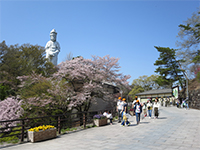
- Along with aspiring to a leading environmental plant suited to Gunma Prefecture’s abundance of nature, Takasaki Plant is actively engaged in local environmental initiatives, including the Takasaki Water Source Forest Activity as a water resource conservation activity. For 17 years since 2007, we have been continuing activities such as undergrowth clearing and thinning in the forest reserve in Kurabuchi-machi, Takasaki City, Gunma Prefecture, as part of our “Water Source Forest Activity”. In addition, by planting a variety of tree species in the factory to harmonize with the factory and surrounding roads, we have created a green factory with excellent aesthetics. These activities have been evaluated for their contribution to forest conservation and raising employee environmental awareness, and we received the 2024 Minister of the Environment Award (Contribution to Regional Environmental Conservation)*.
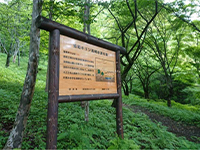
- *
- *Please see the following for information on energy intensity, CO2 emissions, waste volumes, and other data.
2. Safety Activities
You can see this table by scrolling horizontally.
| FY2024 | FY2023 | FY2022 | FY2021 | FY2020 | |
|---|---|---|---|---|---|
| Number of accidents that required time off from work | 0 | 0 | 0 | 1 | 0 |
3. Awards (most recent five-year period)
You can see this table by scrolling horizontally.
| June 2024 | Awarded the 2024 Minister of the Environment Award (Contribution to Regional Environmental Conservation) |
|---|---|
| March 2021 | Awarded the FY2021 Gunma Prefecture Hazardous Material Safety Association Chairman's Award |
Ube Plant
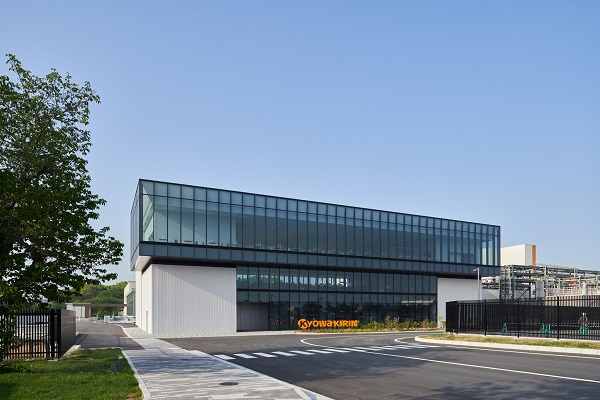
2547-3 Fujimagari, Oaza, Ube-shi, Yamaguchi 755-8501
Tel: +81-836-22-5508
History
Located in the western part of Ube City in Yamaguchi Prefecture, the plant is surrounded by lush greenery.
After getting its start as the Kyowa Hakko Kogyo Co., Ltd., chemical fertilizer plant (ammonium sulfate, urea), since 1965, the worksite has manufactured a wide range of products, including amino acids, pharmaceuticals, agricultural chemicals, and animal drugs, as a fine chemical plant. In 1988, it began manufacturing pharmaceuticals, and along with the establishment of Kyowa Hakko Kirin Co., Ltd., on October 1, 2008, it became the Kyowa Hakko Kirin Co., Ltd., Ube Plant. Along with building a cutting-edge formulation plant in 2013, and it became the Kyowa Kirin Co., Ltd., Ube Plant following the change in the company’s name on July 1, 2019.
By introducing solar panels, natural ventilation systems, and other energy conservation systems, the worksite completed a new office building (SF building, ZEB certified) that considers the global environment in March 2023.
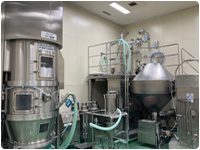
Granulation Process
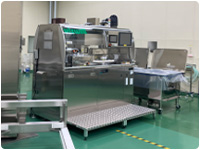
Inspection Process
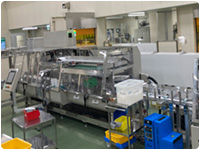
Packaging Process
- *Please see the following for information on production at the Ube Plant. (in Japanese only)
Environmental and Safety Activities
1. Major Environmental Activities
Initiatives to Address Climate Change (Prevent Global Warming)
- We introduced a solar power generation facility based on the PPA method on March 1, 2023, which has begun supplying electricity to each plant building and to the new office building. In addition, on April 1, 2023, we switched over all purchased electricity to RE100-compliant renewable energy*1.
- The SF building achieved net-zero primary energy consumption (derived from fossil fuels) and received the highest rank of "ZEB" certification (the third case in Yamaguchi Prefecture)*2.
- Given the risk of storm surges associated with extreme weather events and rising sea levels, the main facilities and site are surrounded by a tidal embankment to ensure the safety of employees and a stable supply of pharmaceutical products.
- We have acted to introduce high-efficiency equipment with a low environmental impact for newly installed and updated equipment.
- *1:
- *2:
Initiatives to Prevent Air Pollution
- Ube Plant is acting to prevent air pollution by introducing kerosene boilers that do not emit any sulfur oxides.
Initiatives to Prevent Water Pollution
- Along with separating and treating waste liquids that have a high environmental impact as industrial waste, Ube Plant installed sensors (TOC, pH, temperature) along wastewater channels as part of a system that collects waste liquid and prevents it from escaping to the outside in the event of an irregularity. We also act to prevent water pollution of public waters by conducting training and education that assumes the occurrence of an irregularity.
- Rainwater discharged from the Ube Plant site into rivers is collected in a rainwater drainage tank, and the quality of the rainwater drainage is continuously monitored using pH meters and oil film meters.
When an irregularity is detected, a movable gate within the rainwater drainage system operates to switch the drainage channel and collect the rainwater in an emergency inflow tank as a means of preventing the risk of irregular rainwater from being discharged to rivers (environmental accident).
Initiatives to Reduce Waste
- By recycling industrial waste, Ube Plant has continued to achieve Zero emission* status since FY2004.
- *Zero emission: Kyowa Kirin Group uses the term to mean a reduction in the amount of waste disposed in landfills to no more than 0.1% of generated waste.
Compliance with the PRTR Act
- Although Ube Plant uses PRTR Act-designated Class 1 Chemical Substances, the amounts fall below those requiring reporting to the government.
Other Initiatives
- In order to foster and maintain its water sources, Ube Plant conducts forest thinning, pruning, weeding, and other activities in the vincinity of the Mito District water source and Akiyoshidai. It also actively engages in clean-up activities in nearby communities, and conducts beautification and clean-up activities in the area around the plant each month.
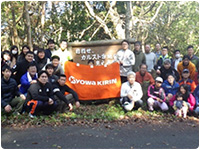
- We regularly provide environmental education for all plant employees in order to promote a greater awareness of the environment.
- We promote green purchasing by pursuing the use of environmentally-friendly products.
- We participate in community volunteer activities and conduct SDGs campaigns within the plant as needed.
2. Safety Activities
You can see this table by scrolling horizontally.
| FY2024 | FY2023 | FY2022 | FY2021 | FY2020 | |
|---|---|---|---|---|---|
| Number of accidents that required time off from work | 0 | 0 | 0 | 0 | 0 |
3. Awards (most recent five-year period)
You can see this table by scrolling horizontally.
| February 2025 | Chugoku Bureau of Economy, Trade and Industry Director-General's Award (Excellent Energy Management Business Operator, etc.) |
|---|---|
| October 2023 | Ube Sanyo-onoda Firefighting Competition, 1st Place Fire Extinguisher Event |
| November 2022 | Yamaguchi Prefecture Governor's Distinguished Person Award for Environmental Conservation Activities |
| May 2020 | Ube Sanyo-Onoda Disaster Prevention Association Chairman's Award (Individual Award) |